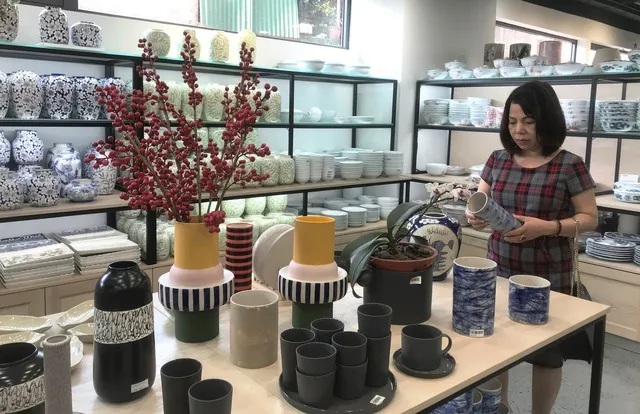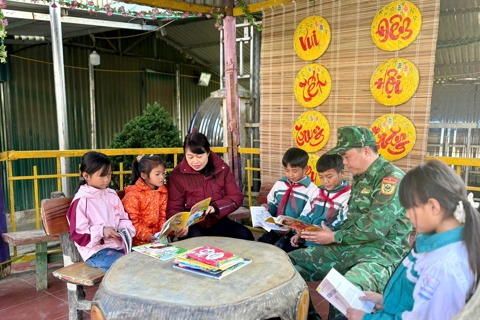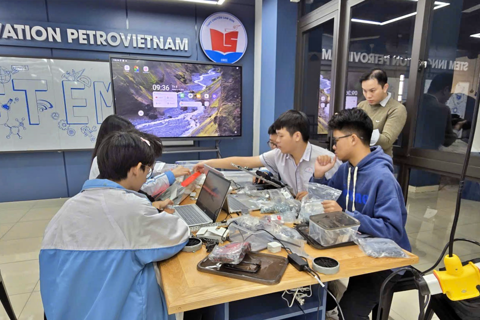Hanoi removes barriers for agricultural and OCOP products
The goods hold strong market potential, but quality and design must improve to boost domestic and export growth.
THE HANOI TIMES — As Hanoi joins other localities nationwide to promote agricultural and One Commune One Product (OCOP) items, investing in packaging would be crucial for better access to the market.
Local experts agree that better packaging can help certified products gain popularity and stronger support from domestic consumers.
Nguyen Anh Duc, Chairman of the Vietnam Retailers Association, said effective packaging is very important, especially for OCOP products. However, there remains little attention to brand identity among producers.

Ba Vi Farm Milk Joint Stock Company's four-star OCOP product. Photos: Van Bien/The Hanoi Times
Duc believes that packaging is a means of preserving agricultural products and an effective way of attracting customers.
"Changing perceptions about product packaging is extremely important in creating an ecosystem and building a packaging industry specifically for OCOP products and craft village products," he said.
Additionally, enterprises lack marketing and product quality management knowledge, making it even more difficult to increase OCOP product visibility among customers.
Cooperation needed between manufacturers and retailers
According to retail experts, Hanoi’s industry and trade sector must effectively "bridge" manufacturers and retailers for OCOP products to become more widely known.
According to Nguyen Xuan Dai, Director of the Hanoi Department of Agriculture and Environment, over the past years, the municipal government has taken steps to help OCOP products reach supermarkets and promote the city’s OCOP products in other provinces and cities.

OCOP ceramic products of Hanoi.
Hanoi has also identified seven key groups of solutions to foster the growth of OCOP products and craft villages. The first is formulating and executing policies, followed by applying science and technology, training human resources, and promoting trade.
Additionally, the city has issued a master plan to develop its craft villages from 2025 to 2030 with a vision for 2050 to facilitate the effective preservation and development of these rural crafts.
Regarding policies supporting OCOP product development in craft villages, Dai said that from 2023 to 2024, municipal authorities established 16 centers to promote OCOP products.
In the near future, the Department of Agriculture and Environment will continue to support businesses in craft villages and encourage them to innovate OCOP product designs and models.
“There is a lot of room in the domestic market for OCOP goods and products from Hanoi’s craft villages. However, to expand the domestic market along with export, consumers' demanding tastes require better quality and design,” said Dai.
Hanoi has also provided guidance to OCOP suppliers to create products that align with consumers' preferences and prioritize environmentally friendly packaging.
Over the past few years, Hanoi has developed over 114 OCOP showrooms. Of those, over 20 are located in craft villages and tourist sites such as Van Phuc Silk Weaving Village, Bat Trang Ceramics, Duong Lam Ancient Village, Ha Thai Lacquerwork Village, Van Tu Sewing Village in Phu Xuyen District, Hong Van Commune Community Tourism in Thuong Tin District, and Khanh Phat Store in Ba Vi District.
"This year, the city expects to open about 10 OCOP showrooms and 5 to 8 centers for designing and promoting OCOP products while strengthening information technology in OCOP production and setting up a system to trace and display products. More OCOP items will be listed on e-commerce platforms,” said the director.
Hanoi currently has 3,317 OCOP products, accounting for 21.3% of the country, including six products rated with five stars, 1,571 with four stars, and 1,718 with three stars.











